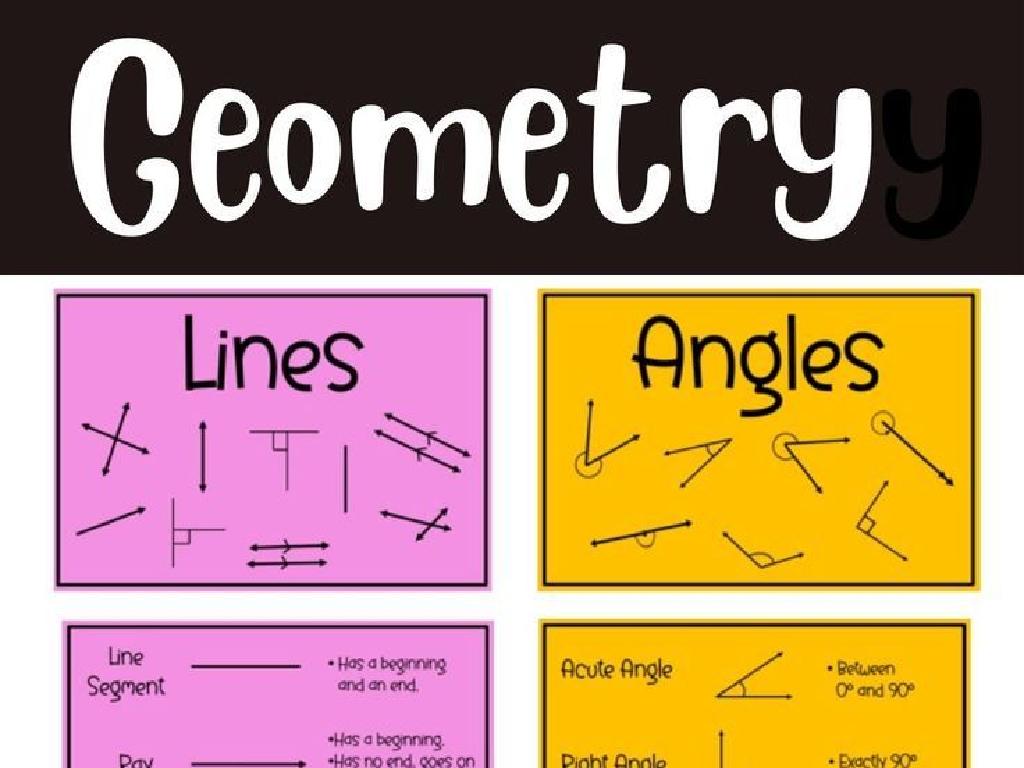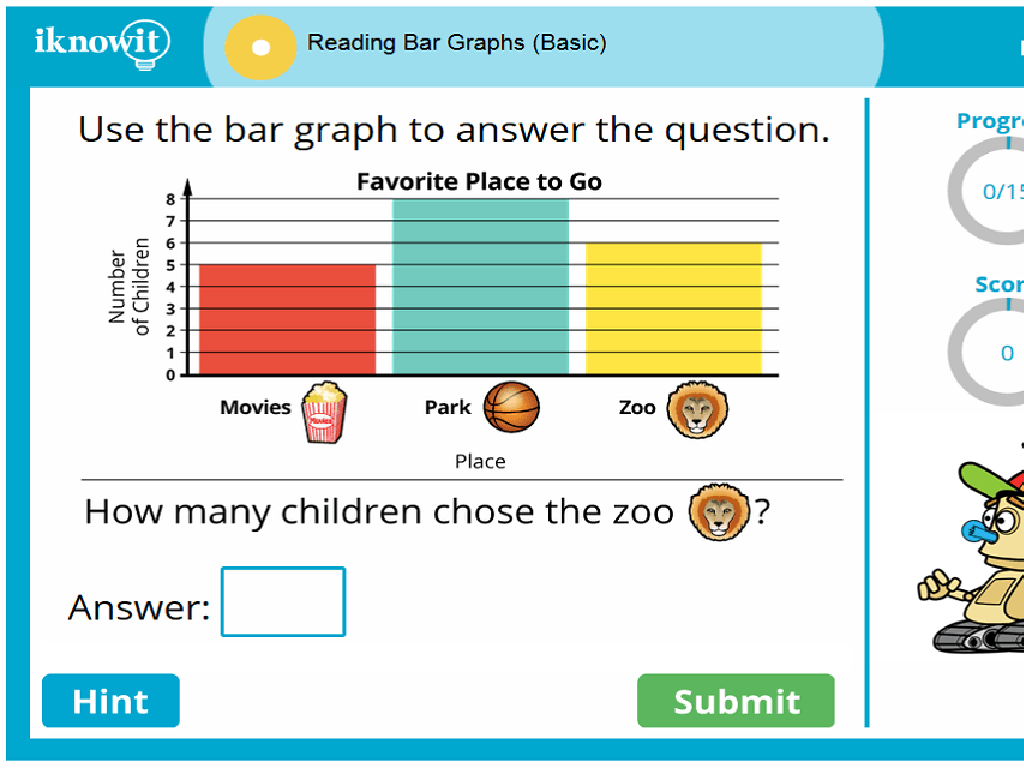Is (X, Y) A Solution To The Linear Equation?
Subject: Math
Grade: Eighth grade
Topic: Linear Equations
Please LOG IN to download the presentation. Access is available to registered users only.
View More Content
Is (x, y) a Solution to the Linear Equation?
– Understanding linear equations
– An equation representing a straight line
– Defining a solution to an equation
– A solution makes the equation true
– Today’s goal: Identifying solutions
– Practice with examples
– Use given (x, y) to verify the equation
|
Begin with a review of what linear equations are and how they represent straight lines on a graph. Explain that a solution to a linear equation is any pair (x, y) that, when substituted into the equation, makes it a true statement. Today’s objective is for students to learn how to determine if a given pair (x, y) is a solution to a linear equation. Provide examples and practice problems where students substitute the values of x and y into the equation to check if the left-hand side equals the right-hand side, thus verifying if the pair is a solution. Encourage students to work through the examples and ask questions if they’re unsure.
Exploring Linear Equations
– Define a linear equation
An equation of the first degree with two variables, e.g., y = 2x + 3
– Examples of linear equations
y = mx + b, where m is the slope and b is the y-intercept
– Key characteristics
Straight line graph, constant rate of change
– Checking solutions (x, y)
Substitute (x, y) into the equation to verify if LHS = RHS
|
This slide introduces students to the concept of linear equations, a fundamental topic in algebra. Begin with the definition, emphasizing that linear equations form straight lines when graphed and have variables raised to the power of one. Provide clear examples such as y = 2x + 3, and explain the slope-intercept form (y = mx + b). Discuss the characteristics, including the appearance of the graph and the constant rate of change represented by the slope. Finally, demonstrate how to check if a given pair (x, y) is a solution by substituting the values into the equation and verifying if both sides are equal. Encourage students to practice with different equations and coordinate pairs to solidify their understanding.
Graphs of Linear Equations: Solutions
– Graphing a linear equation step-by-step
– Plot the y-intercept, then use the slope to find another point
– Significance of slope and y-intercept
– Slope determines steepness, y-intercept where line crosses y-axis
– Locating solutions on the graph
– Points on the line are solutions to the equation
– Analyzing points for solutions
– Check if a point lies on the line to verify it as a solution
|
This slide aims to teach students how to graph linear equations and understand the role of slope and y-intercept in graphing. Students should learn to plot the y-intercept first, which is where the line crosses the y-axis, and then use the slope, which indicates the steepness of the line, to find another point. Emphasize that any point on the line is a solution to the equation. To determine if a specific (x, y) pair is a solution, students should substitute these values into the equation and check if the equation holds true. Encourage students to practice by picking points and checking if they satisfy the equation, reinforcing the concept that the graph represents all possible solutions.
Solutions to Linear Equations
– Define a linear equation solution
– A solution makes the equation true when values are substituted for variables
– Checking if (x, y) fits the equation
– Substitute ‘x’ and ‘y’ into the equation and see if it balances
– Substitution to verify solutions
– Replace variables with (x, y) and calculate both sides of the equation
|
This slide introduces the concept of solutions to linear equations. A solution to a linear equation is an ordered pair (x, y) that, when substituted into the equation, results in a true statement. To check if (x, y) is a solution, students should substitute the x-value for ‘x’ and the y-value for ‘y’ in the equation and perform the arithmetic to see if the equation is satisfied. Emphasize the importance of substitution as a method to verify if the given pair is a solution. Provide examples of linear equations and guide students through the process of checking solutions by substitution. Encourage students to practice with different pairs (x, y) to gain confidence in identifying solutions to linear equations.
Practice: Is (x, y) a Solution?
– Example: y = 2x + 1, is (3, 4) a solution?
– Substitute x=3 and y=4 into the equation
– Replace x with 3 and y with 4 in the equation
– Solve the equation with these values
– After substitution, check if the equation holds true
– Verify if both sides of the equation are equal
– If both sides match, (3, 4) is a solution
|
This slide is aimed at engaging students with a hands-on approach to understanding solutions to linear equations. Start by presenting the equation y = 2x + 1 and the ordered pair (3, 4). Guide the class through the substitution of the x and y values into the equation. Encourage students to perform the arithmetic to see if the equation balances. If after substitution, the left side equals the right side, then (3, 4) is indeed a solution to the equation. This exercise will help students understand how to test if an ordered pair is a solution to a given linear equation. It’s crucial to emphasize the importance of substitution and verification in this process. Possible activities include pairing students to solve similar problems, using different equations and ordered pairs, or having a quick quiz to reinforce the concept.
Class Activity: Solution or Not?
– Work in pairs to find solutions
– Use graph paper for visualization
– Determine if (x, y) fits the equation
– Substitute (x, y) into the equation and check if it holds true
– Explain your reasoning in class
– Be prepared to discuss how you decided if (x, y) is a solution
|
This activity is designed to help students apply their knowledge of linear equations in a collaborative setting. By working in pairs, students can discuss and challenge each other’s understanding, fostering a deeper comprehension. Using graph paper will allow them to visualize the problem and see where the points (x, y) lie in relation to the line represented by the equation. Encourage students to substitute the given pairs into the equation to verify if they satisfy it. After the activity, have each pair explain their reasoning to the class, which will reinforce their learning and communication skills. Possible variations of the activity could include using different linear equations, providing coordinates that are not solutions to promote critical thinking, or having students create their own linear equations and challenging others to find solutions.
Conclusion: Is (x, y) a Solution?
– Recap: Testing solutions for equations
– Substitute (x, y) into the equation and check if true
– Understanding through practice
– Regular practice solidifies the concept
– Homework: Linear equations worksheet
– Solve given equations to find (x, y) pairs
– Next class: Review homework answers
– We’ll discuss solutions and clarify doubts
|
As we conclude today’s lesson, remember that to determine if a pair (x, y) is a solution to a linear equation, you substitute the values into the equation and see if the statement is true. Emphasize the importance of practice in mastering this concept. For homework, students are given a worksheet with a variety of linear equations to solve for (x, y) pairs. This will help reinforce their understanding and prepare them for more complex problems. In the next class, we will go over the homework answers, allowing students to ask questions and clear up any confusion. Encourage students to attempt all problems and remind them that making mistakes is a part of the learning process.





